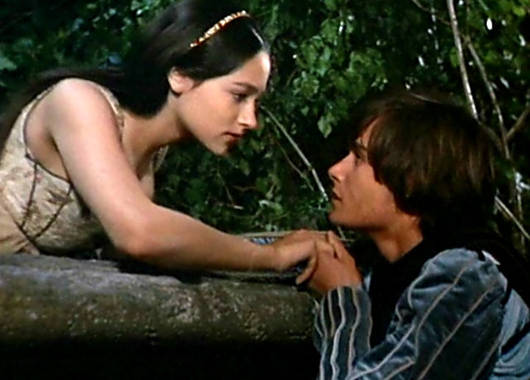

In addition, the setting was dramatically different. Television reporters took the place of narrators and corruption was apparent (prostitution, drugs). While the 1968 version placed the story in the medieval times, the 1996 version placed the story in modern times with police control taking over the city as compared to the Prince’s men.

The time period was an obvious variation. Moreover, the plot also contained differences between the two versions. Her Spanish accent caused names to sound like “Romayo” and “Hooliet.” Modern society is used to racial and ethnic diversity, but this was rarely dealt with in the gothic ages.

The Nurse’s ethnicity also played a role in the characterization of the modern film. He acted like a jester would in the fourteenth or fifteenth Centuries. However, John McEnery’s performance in the 1968 version was appropriate for the movie and time setting. It enlightened people into a more modern and open state of mind because black actors were not included in the cast of medieval time films. His skin color caused the issue of race to be brought up in the movie.

Crazy and loud are some essential ingredients included when most people think about comedy today, and Perrineau depicted these traits to the extreme. brought the character’s dialogue and actions into today’s world. Mercutio was an interesting character in both films, but Harold Perrineau Jr. Claire Danes played the part very well, and was more appropriate for the modern version, her fame aiding in the film’s appeal as well. She appeared flawlessly beautiful and fit the classical role perfectly, although her frantic crying fits were played somewhat out of proportion. The role of Juliet as played by Olivia Hussey was delicate and graceful. Also, Leonardo DiCaprio’s fame aided in the movie’s success while Whiting was unheard of in the world of acting. Both Leonardo DiCaprio and Leonard Whiting depicted emotions well, but DiCaprio seemed less refined or proper in his movements to put a modern spin on the character. Romeo was played by a “pretty boy” in both movies to depict sensitivity and youthful attractiveness. Primarily, casting decisions had a huge impact on character portrayal and the success of the movie. While the 1968 classical version of Shakespeare’s Romeo and Juliet should be appreciated, the modern version portrays the complexity of love in a fast-paced society by using narrative and stylistic elements combined with energetic editing in an advanced, creative way. The 1968 version and the controversial 1996 version give different perspectives of Shakespeare’s famous play. William Shakespeare’s Romeo and Juliet is a cherished piece of literature that has been remade into movies many times throughout history.


 0 kommentar(er)
0 kommentar(er)
